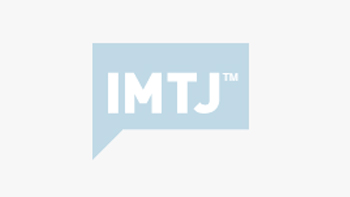A Toronto hospital piloting medical tourism has run into a media storm of protest that could kill the project, as it had been trying to pilot quietly without publicity. Despite targeting a very small number of patients (ten in 2014) it has sparked a debate about the costs of Canadian healthcare, access to healthcare for Canadians and how healthcare in Canada is and should be financed. Critics range from those decrying all medical tourism to those who say Canadian hospitals should only be for Canadians. There have been very few supportive messages.
A Toronto hospital piloting medical tourism has run into a media storm of protest that could kill the project, as it had been trying to pilot quietly without publicity.
Despite targeting a very small number of patients (ten in 2014) it has sparked a debate about the costs of Canadian healthcare, access to healthcare for Canadians and how healthcare in Canada is and should be financed. Critics range from those decrying all medical tourism to those who say Canadian hospitals should only be for Canadians. There have been very few supportive messages.
The reason for the pilot is that Canadian hospitals are working to ever more restrictive budgets, and need to either find ways of substantially reducing costs or new revenue streams. As health insurance is not legal in most Canadian provinces, hospitals have to rely on state funding or self-paying Canadians.
All Canadian hospitals treat foreign patients in emergencies, and a handful, including Toronto’s University Health Network; raise millions treating international patients on a referral basis.
Sunnybrook Hospital’s board has approved a one-year international patient programme and so far it has had two patients; a Barbadian woman who paid $60,000 for radiation treatment for breast cancer, and a Jamaican man who paid $20,000 for radiotherapy for prostate cancer.
Sunnybrook is planning to treat fewer than 10 international patients in a one-year pilot phase so is not openly soliciting medical tourists. Michael Young of Sunnybrook explains, “This is part of a number of initiatives from our new department of business development. Through our website we are beginning to advertise that we are open for business. The profitability of this could be as high as $1-million annually. It could be much more than that, but the limiting factor will be our spare capacity.”
Critics argue that patients from abroad could displace tax-paying locals or pave the way for rich Canadians to buy their way to the front of the queue. In 2013 McGill University Health Centre in Quebec performed cardiac surgery on a Kuwaiti woman whose government paid the $200,000 cost, and the province’s health minister called it “unacceptable” and vowed not to let it happen again, except on compassionate grounds.
Sunnybrook has vowed not to displace Ontario patients. The hospital plans to treat foreigners only where it has extra capacity or staff on standby, as it does on its burn unit. The profits could be used, for example, to prevent closing operating rooms. Budgets for Ontario’s hospitals have been frozen for three years, while the running costs keep rising.
Ontario has no plans to stop hospitals attracting medical tourists but Quebec plans to do all it can to prevent local hospitals targeting foreign patients.
The Canadian healthcare system is under pressure, with rising waiting lists and insufficient finds. Province controlled regulation means that in some provinces health insurance is legal, in others it is not, while in some provinces private healthcare in hospitals is allowed, while in others it is not allowed or strongly discouraged. Some provinces have even made noises about banning medical tourism, although it is doubtful that they have the legal powers to do this.
As evidence of what local hospitals are doing on medical tourism slowly emerges, it has provoked another debate with some evidence that hospitals are, or are being encouraged, to charge foreign patients double what they do for Canadians.
Canada is a microcosm of the global debate on medical tourism. There are only a finite number of doctors, nurses and hospital beds so a surgeon performing surgery on well-to-do foreigners is not available at that moment to treat locals; so is the hospital using spare capacity, or using local capacity for foreign patients to boost revenue? Should foreigners be charged much more than locals? Can money from medical tourism allow hospitals to keep operating rooms open longer and thus reduce wait times for locals; or is this using resources that increase waiting times?
In Canada there is an underlying problem for the healthcare system — as governments, both federal and provincial, have cut funds. This triggers another debate as to whether throwing money at any health-care system will fix it, or whether ways of changing how hospitals work and where people are treated is a better long term solution; as is happening in the excellent Scandinavian systems.
For Canada, the only certainty for hospitals and medical tourism is that if they do not seek new revenue they get criticized for not having enough resources to treat locals, and if they do embrace medical tourism they get criticized for treating foreigners rather than locals. So whether any individual hospital administration will promote medical tourism may depend very much on how far they can tolerate sustained criticism in the media, from patients, and from politicians who are ultimately responsible for signing off what state provincial funding they get.








 ©2024 All rights reserved LaingBuisson
©2024 All rights reserved LaingBuisson 


